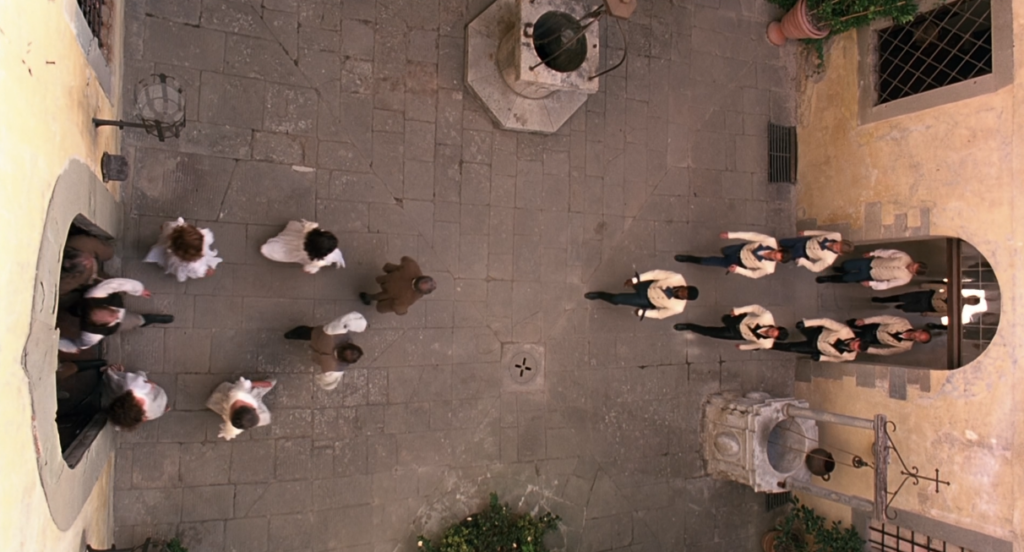Definition
Nondiegetic sounds emerge from beyond the film’s fictional world that is depicted on screen. Only film audiences hear these sounds. While diegetic sounds help to shape the spatial and temporal setting of the film, nondiegetic sounds, typically music added in post-production, are not affecting the dramatic action directly. In other words, characters do not hear or respond to the music that film audiences hear.
Diegesis refers to the story that is explicitly depicted on screen (e.g., the events that the characters themselves experience firsthand), as opposed to the larger story that is implied (e.g., historical contexts being mentioned, events that have led up to the present action, events happening elsewhere in the film’s universe but not shown on screen).
There is an important distinction between incidental music called for by a scene (or music and sound created by a scene) and ornamental, cinematic uses of music (at the discretion of the sound editor).
Characters can hear, register, and respond to diegetic sounds and music, which is constitutive of the dramatic action. It is clear to film audiences when characters within the film’s fictional universe can hear certain sounds.
Characters do not hear nondiegetic sounds and music that underscores, but does not constitute, dramatic actions. Characters do not respond to the nondiegetic incidental music. Alexa Alice Joubin argues that “such music has an emoting function in dictating the affect of the audience.”
Examples
Contemporary cinema also features similar commentator figures. Singer and cult hero Jonathan Richman and durmmer Tommy Larkins serve as the chorus who exist outside the story in There’s Something about Mary (dir. Bobby and Peter Farrelly, 1998). Their music is nondiegetic until the final scene. Jonathan is shot accidentally and inadvertently becomes part of the story.
In Shakespearean terms, a typical nondiegetic element is the Chorus who comments on, but does not participate in, the dramatic action. Examples include the Chorus in Romeo and Juliet and the jester Feste in Twelfth Night.
Kenneth Branagh’s Much Ado About Nothing (1993) features nondiegetic music composed by Patrick Doyle (Branagh’s long-time collaborator) in the scene where the returning soldiers meet the ladies in Leonato’s mansion in Messina, Italy.

A bird’s-eye view shot shows the two parties enter in left and right to meet in a courtyard. Both parties are clad in white. The music cues the audiences on the mood (romantic), genre (heterosexual love), and theme (“merry war” between men and women) of Much Ado About Nothing. The music here primarily serves film audiences.
When describing sound and music, we can break it down to three categories: the sound’s characteristics (such as pitch, volume, and quality), the source (whether it is diegetic or nondiegetic), and the type (musical, orchestral, vocal, dialogue, special sound effects).
Exercise
Kenneth Branagh’s Much Ado About Nothing (1993) opens with Beatrice (Emma Thompson) singing “Sigh No More, Ladies.” Drawn on Balthasar’s song in Shakespeare (act 2 scene 3), the lyrics thematize masculine infidelity to lovers and female indifference to it.
The film opens with a black screen with Beatrice reciting the lines, who takes on a role akin to the Chorus.
Your Turn: Analyze the mix of diegetic and nondiegetic sound and music in the opening sequence. Does the cynical song send conflicting messages? Why is this song, a song with a bitter tone, used in celebratory moments in a film about love?
